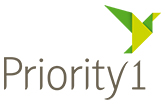
By the end of 2018 Australia had, relative to the size of its overall economy, one of the highest levels of household debt in the world. At 127% of gross domestic product (GDP), our household debt, as a percentage of GDP, had nearly doubled over the last 20 years.
So are Australian households groaning under the weight of oppressive levels of debt? For the most part the answer is no. A major reason for the increase in household debt is that interest rates are much lower than they were 20 years ago, so it’s easier to service larger loans. And over 90% of our household debt is owner-occupied home loans and investment loans.
Good debt, bad debt
Home loans and investment property loans are often referred to as ‘good’ debt because, when used responsibly, they (usually) improve wellbeing and build wealth over the long term. That said, poor choices or unfortunate changes in circumstances – borrowing too much, loss of a job or an increase in interest rates for example – can see ‘good’ housing debt turn ‘bad’.
Another type of bad debt is lifestyle debt. This has a negative impact on wealth because the debt is being used to buy things such as cars and clothes, holidays and groceries – that lose value rather than gaining it. In today’s world it’s easy to accumulate bad debt.
Temptation galore
Credit cards, digital wallets on our phones, payday loans and buy-now-pay-later options all make it easier to spend money, even if it’s money we don’t have. Relentless, targeted advertising, the fear of missing out, the increasing level of peer pressure enabled by social media or just paying for daily essentials are all capable of leading us into spiralling debt.
Is debt consuming you?
Some warning signs that you have a debt problem include:
- Not paying off your credit card in full each month. This means you will be paying a high rate of interest on the carryover balance.
- Your total debt is increasing, along with your interest payments.
- You’re experiencing housing stress. This means rent or mortgage repayments consume more than 30% of your pre-tax household income.
- You’re using debt to fund basic living costs.
Taking control
How do deal with your particular debt problem depends very much on personal circumstances.
- Track your spending. Australians buy huge amounts of clothes they don’t wear, food they don’t eat and gadgets they don’t use. For every purchase ask yourself, “do I really need this?”
- Take out a lower interest rate personal loan to pay off high interest debts such as credit cards. Repay the loan as quickly as possible.
- If you have a home loan, make sure it has a linked offset account that you use for everyday banking. You only pay interest on the difference between your loan balance and offset account balance so all of your money is working to pay down your loan.
- Review your home loan regularly. You may be able to refinance at a lower interest rate. Check for all the fees involved.
- Talk to your Priority1 Wealth Management Group financial coaching team. We can look at your specific situation and recommend strategies that will put you in control of your debt rather than having debt consume you.
